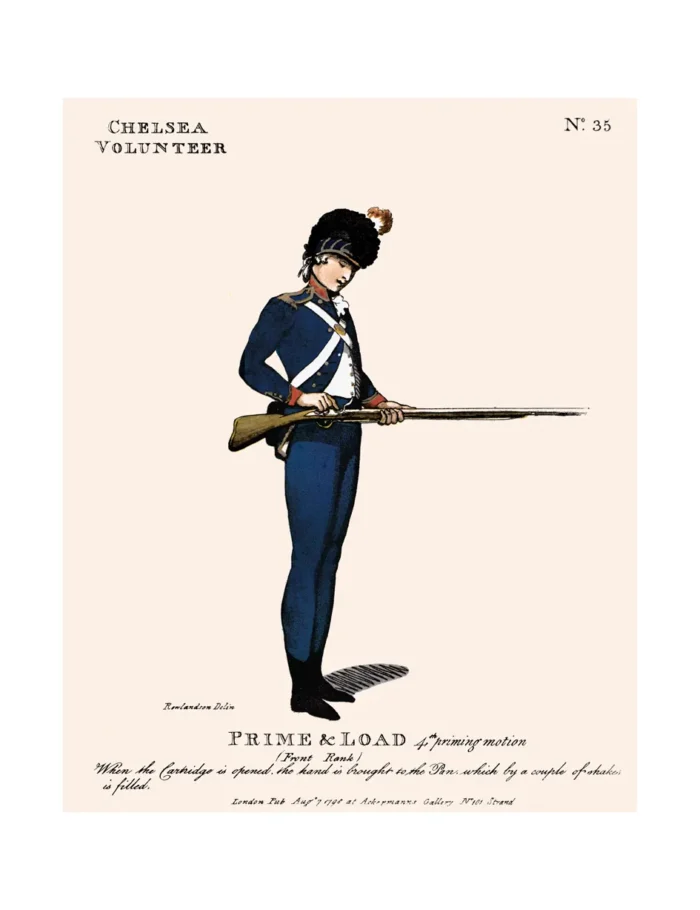No. 35 Chelsea Volunteer
£15.00
Chelsea (scroll down for a more detailed Description)
The first reprints of the 1798 aquatints by Thomas Rowlandson (published by Rudolph Ackermann) published in 1972 by Hugh Evelyn Limited.
Image size is 20.5 x 25.5 cm [8” x 10”] against a light greyish orange background (c. RGB fcf2e1) impressed on medium high white matt cartridge paper of c. 120 g/m2.
Print size: c. 26.2 x 33.7 cm [17” x 12 ¾”] may vary slightly from printers’ cut 50 years ago
Details of London Wards and Parishes provided by © the British Library
We offer thanks to the Trustees of the British Library and British Museum and Wikipedia for some text (and map outlines
Print is STANDARD size – shipping is the same for 1 to 10 prints (based on largest print size in your order) – see Shipping & Returns
Who were the Loyal Volunteers ? See here
In stock
Description
Chelsea (see map) hosted the Synod of Chelsea in 787 AD. The first record of the Manor of Chelsea precedes the Domesday Book and records the fact that Thurstan, governor of the King’s Palace during the reign of Edward the Confessor (1042–1066), gave the land to the Abbot and Convent of Westminster. Abbot Gervace subsequently assigned the manor to his mother, and it passed into private ownership. By 1086 the Domesday Book records that Chelsea was in the hundred of Ossulstone in Middlesex, with Edward of Salisbury as tenant-in-chief. King Henry VIII acquired the manor of Chelsea from Lord Sandys in 1536; Chelsea Manor Street is still extant.
Two of King Henry’s wives, Catherine Parr and Anne of Cleves, lived in the Manor House, as did the future Queen Elizabeth I. Thomas More lived nearby at Beaufort House. In 1609 James I established a theological college, on the site of the future Royal Hospital Chelsea, founded by Charles II in 1682. By 1694, Chelsea had a population of 3,000 but remained rural and served London to the east as a market garden, a trade that continued until the 19th-century. King’s Road, named for Charles II, recalls the King’s private road from St James’s Palace to Fulham. In 1718, the Raw Silk Company was established in Chelsea Park, with mulberry trees and a hothouse for raising silkworms. At its height in 1723, it supplied silk to Caroline of Ansbach, then Princess of Wales.
The best-known building is Chelsea Royal Hospital for old soldiers, opened in 1694. The building by Christopher Wren stands in extensive grounds, where the Chelsea Flower show is held annually. The former Duke of York’s Barracks (built 1801–3) off King’s Road is now part of Duke of York Square, a redevelopment including shops and cafes and the site of a weekly “farmers’ market”. During the mid 1800s, Cremorne Gardens, London, was a popular pleasure gardens area established in 1845. It continued to operate until 1877. The area lay between Chelsea Harbour and the end of the King’s Road.
Additional information
| Weight | 0.0121 kg |
|---|---|
| Dimensions | 25 × 35 cm |






